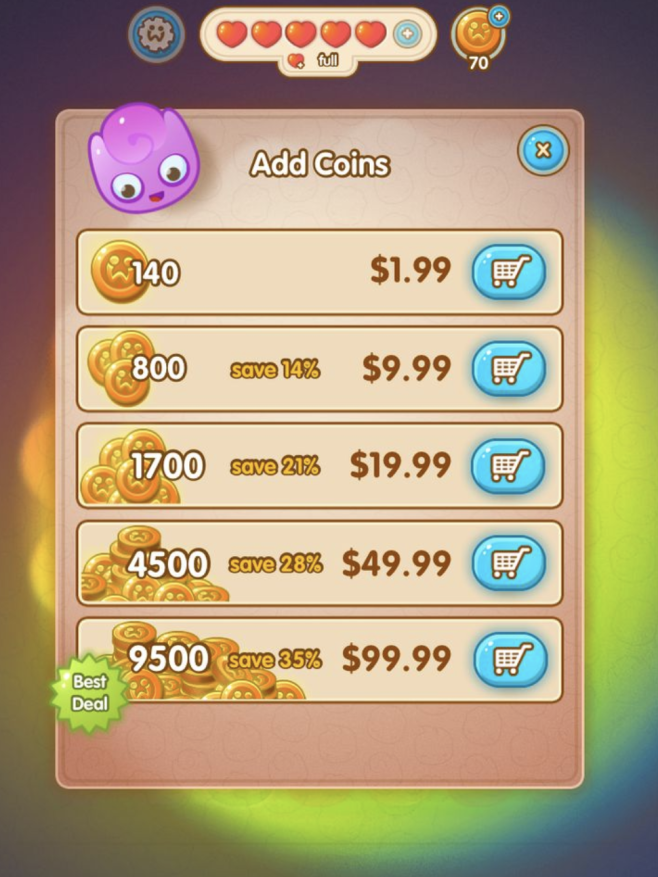· 9 min read
The Best Kept Analytics Secrets Of The Most Popular Games: Great Artists Steal
Jacqueline Zenn
Content Crafter at GameAnalytics
There’s an infamous quote that’s been ascribed to a variety of artists and creative minds over the years, including Pablo Picasso, but Steve Jobs may have been the most famous to use it when, while discussing the Macintosh, he said that “great artists steal”. However, the phrase applies to much more than just the iconic machines; it can also be used when discussing painting, composing, writing, and – naturally – creating amazing games.
That’s probably obvious when it comes to the creative side of developing a game, but being able to recognize greatness, and not necessarily stealing – but adapting it for your own purposes – is valuable when it comes to the analytics side.
Learning From The Greatest
It should hardly be surprising that the best games tend to have great analytics – and smart analytical minds behind them as well. After all, an amazing-to-play and successful game is usually informed by learning and understanding the way that players use it, then making tweaks and enhancing the player experience in such a way that it maximises the value of the game for players and developers alike.
Naturally, making all these analyses and corresponding tweaks means that there are a few things that the developers responsible are well aware of via their analytics. However, these things are often not as obvious as they should be, especially for developers who may not be as savvy as the ones who’ve been running successful games for a while.
So without further adieu, here’s what the developers and analytics experts behind top-notch games probably aren’t telling you…

1 – Free Players Shouldn’t Get So Many Perks
Players who don’t pay to play should still get attention, but they shouldn’t get a free ride. However, the in-game experience should be markedly better for players who spend money. Think about the difference between getting bottle service versus trying to get a drink at a packed bar. The bottle service means practically seamless refills and personalised service, while the hoi polloi option means fighting through the crowd and waiting for what you want.
The same goes for F2P games – the free to play version shouldn’t be quite as easy, luxurious, or smooth as the version that the one used by players who’ve invested some money in your game. That being said, their experience should still be fairly close – just slightly and noticeably better for the players who invest some cash into the game.
At the end of the day, the difference between just playing a game casually without spending, having to grind it out in order to level up, or just investing the cash in order to get ahead in the game shouldn’t make a major difference in the overall player experience, but it should be enough of an upgrade for the whales or dolphins (more on that later) to make their spending worthwhile. Otherwise, what entices them to spend more?
The free casual players and the grinders are definitely still valuable and an important part of the community, but the whales should definitely have the best possible experience. Likewise, don’t underestimate the other fish in the sea and the possibility that they may become whales someday – and the ability that smart analytics, reporting, and analysis can give you as the developer to help make sure that happens.

2 – In-App Purchases Should Cost More (In Most Cases)
Getting players to install and regularly play your game is only the beginning; once you’ve got a player hooked on your game, don’t let them forget it. In-app purchases can be worthwhile on many levels, so make the most of them. Figuring out the sweet spot where users don’t mind spending the money is important, and the best games tend to have that all figured out.
This is something that can be different for each and every game, and even every purchase option. Looking at similar games and what they charge for every level of loot or item is always a good idea, and if you can potentially A/B test or perform other experiments with costs, this can also be useful as well.
Many studies show that the ideal price point for most in-game purchase is $2.00 USD. That’s a good average cost to start with, but it can also serve as a jumping off point for testing prices for individual purchase opportunities. Introducing new items during a holiday or special sale also works well too, since you can always incrementally raise costs once you’ve gotten users hooked.
Many studies show that the ideal price point for most in-game purchase is $2.00 USD. That’s a good average cost to start with, but it can also serve as a jumping off point…
3 – No Reasons To Repeat
Your in-app purchase options shouldn’t be “one and done”. There should be a point and a reason for users to repeatedly buy items in your game, or to upgrade and expand on their existing loot collections. Avoid having one purchase be a significant answer or game changer for anything, but rather focus on incremental upgrades (or ad views, or in-game engagements) that make the difference for players over time.
Longevity of player engagement – both in terms of playing time and the amount of time they have the game installed and play it regularly – is a key factor in making a F2P game successful (or any game for that matter). It’s been said that the best games average at least three purchases or unique spends per spending player, and that’s always something to keep in mind as you’re reviewing your game’s performance.
What’s more, you need to remember that repetition is the child of retainment. After all, players that don’t return to the game don’t make repeat purchases, so retention rate really matters. Games that have players consistently return in general, but a day seven (after installation and initial engagement) retention rate of more than 10% is a significant indication of future success.
Ergo, you need to give your players reasons to keep coming back! Whether that’s through new types of loot, different armour, weapon, or wardrobe options, additional levels to reach and unlock, new characters to play with, or virtually any other reason possible, make sure they keep coming back and spending on your game.

4- Spotting The Whales
One of the primary goals of most game developers or marketers is to land a bunch of whales – big-spending regular players who can definitely make a serious positive impact on a game’s success. A “whale” of a player is often defined as a player who has a $100 (USD) or more lifetime spend, but there are number of ways to identify your game’s whales and their slightly lower-spending cousins, dolphins. Keep in mind that it’s likely only around 2% of your game’s users will spend anything in your game at all, and that’s if you’re lucky!
It’s been stated that in order to have a successful (read: profitable) game, at least 5% of your spending players must be whales. In the grand scheme of things it seems simple, but 5% of 2% of a player community has to be a pretty tiny amount, even for hugely popular games.
So how do you catch them? That’s a subject for another post, but GamaSutra and the Wall Street Journal have done a great job of explaining the subject of whales and the psychology behind that type of player in each publication’s unique ways.
[bctt tweet=”Avoid having one purchase be a significant answer or game changer for anything {…} focus on incremental upgrades that make the difference for players over time.” username=”GameAnalytics”]
5 – How These Ideas Historically Apply To The Various F2P Models And Features
Since the advent of mobile gaming (and one could say we are currently in its heyday, but we all know the future has amazing technology on the horizon), there have been tons of improvements and advances in the realms of gameplay and basic analytics.
For instance, there’s been some amazing updates in player retention strategies that closely resemble successful online marketing and lead generation tactics, new methods of player on-boarding that are virtually friction-less, hierarchical approaches to the ways games loop in each session, and perhaps most importantly, the development of reward processes that lead to increased player momentum, engagement, and time spent in-game.
The source for much of these improvements has been due to careful analysis and subsequent improvements to popular games, and learning every step of the way.
Why All This Matters
All of this becomes even more important when you consider the fact that the majority of F2P games are non-profitable. In fact, the ratio stands at around 3:7 profitable versus non-profitable. This is based on games hitting 10c ARPDAU (average daily revenue per active user) or $1 LTV (lifetime value). So making adjustments based on the analytics knowledge that you glean from from successful games can actually make all the difference in your game’s lifespan and overall success, however you define it.
Of course, it helps to learn from the best! And this case, the best games offer a lot for their developers to learn from their analytics and corresponding insights into player behavior – for and others to learn from how those developers adapt their learnings to game play, pricing, and retention models, and more. It’s all a lesson in taking advantage of every piece of knowledge available to you, playing the most successful games, and taking and modifying their strategies for your own purposes.
And remember, as Steve Jobs claimed Picasso said, great artists – and great developers in this case – steal.